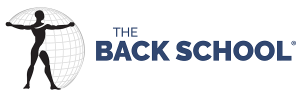 Written By: Matt Jeffs, DPT, PSM, CEAS
Written By: Matt Jeffs, DPT, PSM, CEAS
Moving Beyond Stretch & Flex
Recently, I visited an interesting article from the May 2017 edition of the American Society of Safety Professionals (ASSP) Professional Safety magazine. There I found researchers Choi & Sathy et. al. shared the results of their recent study of construction firms who were between 1 and 3 years post-implementation of Workforce Stretch & Flex (S&F) Programs. The reported consequences of the impact from these S&F programs were as compelling as they were revealing.
Outcomes showed the average number of Work-Related Musculoskeletal Disorder (WMSD) injuries between these two periods had dropped 51.2%. The average number of OSHA-recordable injuries between these two periods also decreased 48.7%. Additionally – in OSHA lost-workday injuries – the average number had dropped 60.8%. Now, this study drew from a relatively small sample size, but results like this suggest that when S&F programs are implemented, the rates of WMSD injuries can potentially be decreased, dramatically.
‘Why Stop There – What About Workplace Stress?’
NIOSH implies that working conditions – based on experience and research – play a primary role in causing job stress. According to NIOSH, exposure to stressful working conditions can have a direct influence on worker safety and health. They go on to list ‘a relaxed and positive outlook’ among workforce members as a goal that can help to reduce the effects of stressful working conditions – and by default – to reduce health and safety risk factors.
It appears job stress can produce a loss of focus, which is a common element – and cause – of hazardous workplace incidents. Ergonomic health and safety professionals might do well to look for signs of stress among the workers they evaluate. Once identified, implementing scientifically supported countermeasures might effectively help manage or reduce these hazardous situations. The impact on incident rates can then be tracked and documented.

‘Why Stop There – What About Workplace Distraction?’
Job stress isn’t the only factor to consider in the modern workplace. Deadline pressures and productivity goals are also some of the biggest workplace distractions. Allowing S&F breaks can help alleviate this problem by cognitively ‘wiping-the-slate-clean’. In essence, allowing workers an opportunity to recalibrate mentally as well as physically. Refocused employees may be more likely to pay closer attention to the job at hand and be better able to minimize noisome mental distractions.
Distracted and stressed workers – in operational environments particularly – pose worrisome potential for increasing workplace hazards. Workers with essential job functions that include operating heavy equipment, motorized gear or power tools are of special emphasis, but they’re certainly not alone. Those who perform maintenance work with energized equipment, those who work in permit-required confined spaces, and those who serve as ‘hole-watch’ or ‘fire-watch’ attendants must also be focused AND calm for optimal safety. Lives can depend on it.
Read Part 2 – Mindfulness, Movement & Meditation Here!
 About Matt Jeffs:
About Matt Jeffs:
Dr. Jeffs is a safety management advisor for national and international firms. He’s also a seasoned ergonomics educator here at The Back School. Years ago, he excelled as a big-wave surfer and an experienced ocean lifeguard with numerous rescues, prior to earning both his undergraduate and doctoral degrees in physical therapy.
He now serves as a Tai Chi Fitness Instructor in multiple settings – including the modern workplace. Through his unique approach to ‘Meta-Physical Therapy’, Mind-Body Awareness is taught, learned, and cultivated into safer, healthier and more productive work environments.
Dr. Jeffs applies his quirky and unconventional long-term perspective to many undeservedly contentious trends. He hopes offering insight on how to make them work – for the most people possible – is a goal worthy of us all.
To learn more from Dr. Jeffs, check out his courses through Summit Professional Education, “Direct Access” and “Telehealth Ergonomics for Healthcare Professionals.”
